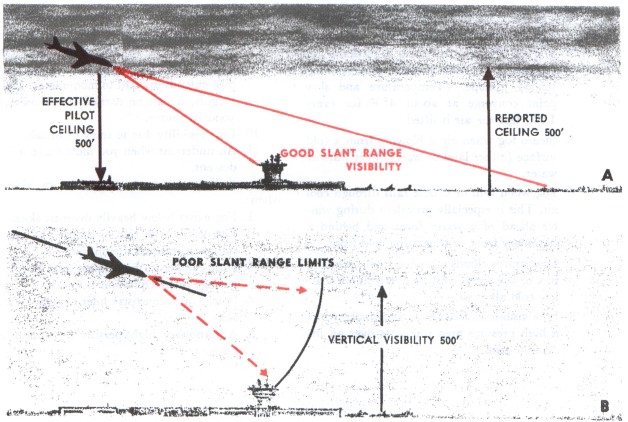Aviation Weather
full text of the classic FAA guide
OBSCURED OR PARTIALLY OBSCURED SKY
To be classified as obscuring phenomena, smoke, haze, fog, precipitation, or other visibility restricting phenomena must extend upward from the surface. When the sky is totally hidden by the surface based phenomena, the ceiling is the vertical visibility from the ground upward into the obscuration. If clouds or part of the sky can be seen above the obscuring phenomena, the condition is defined as a partial obscuration; a partial obscuration does not define a ceiling. However, a cloud layer above a partial obscuration may constitute a ceiling.
An obscured ceiling differs from a cloud ceiling. With a cloud ceiling you normally can see the ground and runway once you descend below the cloud base. However, with an obscured ceiling, the obscuring phenomena restricts visibility between your altitude and the ground, and you have restricted slant visibility. Thus, you cannot always clearly see the runway or approach lights even after penetrating the level of the obscuration ceiling as shown in figure 122.

Partial obscurations also present a visibility problem for the pilot approaching to land but usually to a lesser degree than the total obscuration. However, be especially aware of erratic visibility reduction in the partial obscuration. Visibility along the runway or on the approach can instantaneously become zero. This abrupt and unexpected reduction in visibility can be extremely hazardous especially on touchdown.
Table of Contents
Previous Section: Precipitation
Next Section: In Closing
A PDF version of this book is available here. You may be able to buy a printed copy of the book from amazon.com.
